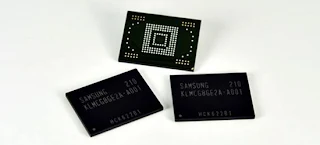Самое основное различие - ограничение на число циклов записи-считывания. Есть и иные особенности, связанные с внутренней геометрией расположения чипов в носителе и работой контроллера. Конечно, файловая система обязана учитывать эти особенности и в максимальной степени аккуратно относиться к носителю, путём равномерного распределения нагрузки. Журнально-структурированная (log-structured) файловая система предполагает, что все данные записываются последовательно и никогда не перезаписываются. Для очистки старого "мусора" применяется отдельная процедура. В этом принципиальное различие от журналируемых файловых систем, которые не чересчур подходят для работы с флэш-памятью. Напомним, что предыдущая журнально-структурированная файловая система LOGFS c учётом особенностей флэш-памяти была представлена 16 мая 2010 г. и включена в ядро Линукс 2.6.34. До LOGFS были UBIFS и Yaffs2. Хотя, создатели F2FS постарались превзойти всех предшественников. Их разработка работает ч/з FTL (интерфейс управления флэш-памятью на микросхеме), поддерживает различные алгоритмы для размещения файлов и различные алгоритмы очистки. Новая файловая система F2FS разработана и передана в open source фирмой Samsung, крупнейшим в мире производителем микросхем NAND. Прежде всего F2FS предназначена для эксплуатации в Android-смартфонах, где до сих пор нередко встречается файловая система Ext4. Система F2FS превосходит Ext4 по работе с флэш-памятью в большей части бенчмарков. Естественно, ничто не мешает применять F2FS на десктопе или сервере. Для форматирования раздела под F2FS довольно выполнить следующие команды:
# mkfs.f2fs /dev/sdb1
# mount -t f2fs /dev/sdb1 /mnt/f2fs
In the list of mailing of developers of kernel Linux the patch with support of new zhurnalno-structured file system F2FS (Flash-Friendly File System), and also the corresponding program mkfs.f2fs for formatting of sections is presented. File system F2FS is intended for more effective work with flesh-memory NAND which is widely used in devices like SSD, eMMC and SD-cards. Presently flesh-memory is used everywhere: from mobile phones to servers. The matter is that microcircuits NAND have specific features which distinguish it from traditional magnetic stores with rotating disks. The most important difference is a restriction on quantity of cycles of record-reading. There are also other features connected with internal geometry of an arrangement of chips in the carrier and work of the controller. Naturally, file system should consider these features and as much as possible make thrifty use of the carrier, by uniform distribution of loading. Zhurnalno-structured (log-structured) the file system assumes that all data registers consistently and is never rewritten. For clearing of old "garbage" separate procedure is used. In it basic difference from журналируемых file systems which not too approach for work with flesh-memory. Let's remind that the previous zhurnalno-structured file system LogFS c has been presented by the account of features of flesh-memory on May, 16th, 2010 and included in kernel Linux 2.6.34. To LogFS were UbiFS and Yaffs2. However, founders F2FS have tried to surpass all predecessors. Their working out works through FTL (the interface of management of flesh-memory on a microcircuit), supports different algorithms for placing of files and different algorithms of clearing. New file system F2FS is developed and transferred in open source by company Samsung, the world's largest manufacturer of microcircuits NAND. First of all F2FS it is intended for use in Android-smart phones where till now often there is file system Ext4. System F2FS surpasses Ext4 in work with flesh-memory in the majority бенчмарков. Certainly, nothing prevents to use F2FS on a desktop or the server. For section formatting under F2FS it is enough to execute following commands:
# mkfs.f2fs/dev/sdb1
# mount-t f2fs/dev/sdb1/mnt/f2fs


Комментариев нет:
Отправить комментарий